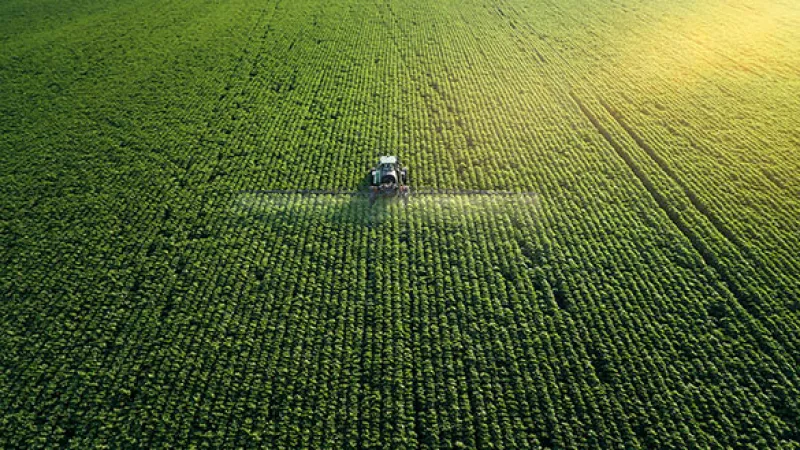Debbie Carlson, for CME Group
AT A GLANCE
- Farmers are set to plant more acres than a year ago, as crop prices and input costs remain high
- China bought higher than expected levels of U.S. corn and soybeans early in the year, a trend that could be threatened by a strong Brazilian crop
Weather is a perennial question, but farmers face other issues, too, including still-costly inputs and much higher interest rates versus 2022. Farmers must also consider their crop marketing plans in light of possibly strong competition from Brazil while gauging China’s appetite for grains.
The U.S. Department of Agriculture said in its March 31 Prospective Plantings report that producers intend to plant 92 million corn acres, up 4% from a year ago, while also planning to seed 87.5 million soybean acres, up slightly from last year. USDA estimates 2023’s total wheat acreage at 49.9 million acres, up 9% from 2022.
The higher wheat figure surprised Scott Irwin, agricultural and consumer economist at the University of Illinois at Urbana-Champaign, who called it the story of the day. “What really jumped out at me was how much of that was in the eastern Corn Belt, over a million acres of double-cropped wheat,” he says.
USDA also released its grain stocks report on March 31, and Kent Stutzman, broker at Advance Trading, was surprised to see hefty on-farm storage, especially in Illinois. He says futures prices haven’t encouraged marketing, but at some point, producers need to start selling the old crop, which may depress prices if farmers all sell at the same time.
Correlations Between Crop Prices and Crop Inputs
Prices for key inputs such as fertilizer fell from last year’s extremely high levels, but remain elevated. Irwin noticed a correlation between grain prices and inputs, particularly corn and fertilizer, which he says may be the new normal. If grain prices fall, there will be some decline in fertilizer prices, but he also notes that input prices rise faster than they fall, which he calls a “rockets and feathers situation.”Stutzman says high nitrogen costs kept some farmers from dressing fields with that input last fall, hoping to see lower prices, which worked in their favor. Irwin noted nitrogen prices fell about 15% in recent months, and he thinks that trend suggests further declines going into summer. Stutzman expects producers will make a habit of looking at fertilizer prices in the summer and perhaps lock in needs when they believe costs are beneficial.
Interest rates are also higher than a year ago, although Stutzman says the impact of higher rates hasn’t worked its way to cash rents or machinery, but he believes it’s capping farmland prices. Soon farmers will need to start penciling in the interest rate costs of storing grain into their marketing decisions.
Stutzman says with all the uncertainty in the markets, he uses a flexible and balanced risk management approach with his clients, including short-dated new crop options contracts that bring the ability to protect potential bottom lines within a window of risk like a sudden weather event.
“We want to be protected if this market decides it wants to work lower, but if we have weather problems, we want to have the flexibility …. to take advantage of higher markets as well. So that’s where the options come into play,” he says.
Learn More About New Crop Weekly Options
U.S. Production Prospects
Irwin says he’ll watch how Brazil’s second corn crop, called safrina, will develop. If their harvest is poor, it could keep Chinese importers buying U.S. corn, as they did in February and March.He’ll also keep an eye on U.S. condition ratings as crops develop this summer.
“With the acreage base we have, we’re already in a stock-building environment. You could really see a downdraft in grain prices this summer if those ratings show that production prospects are really good.”






